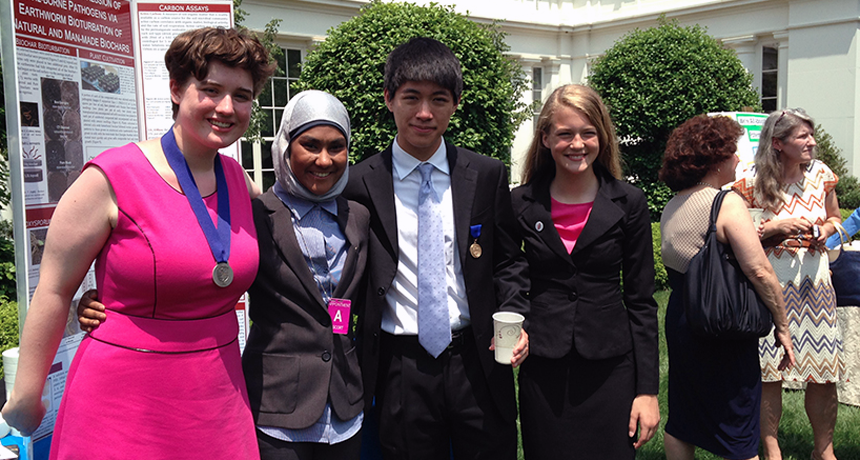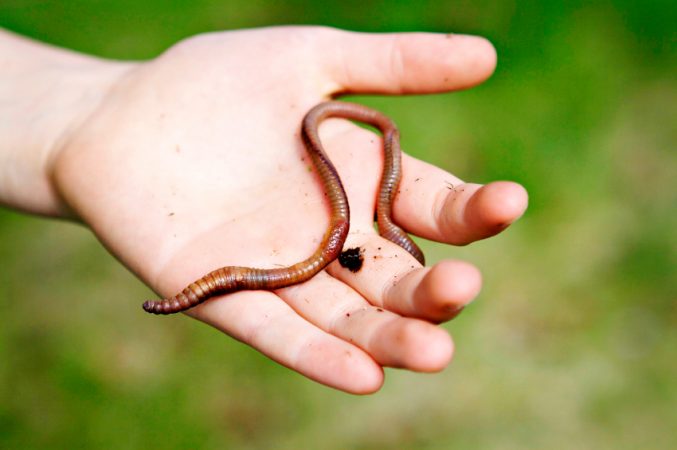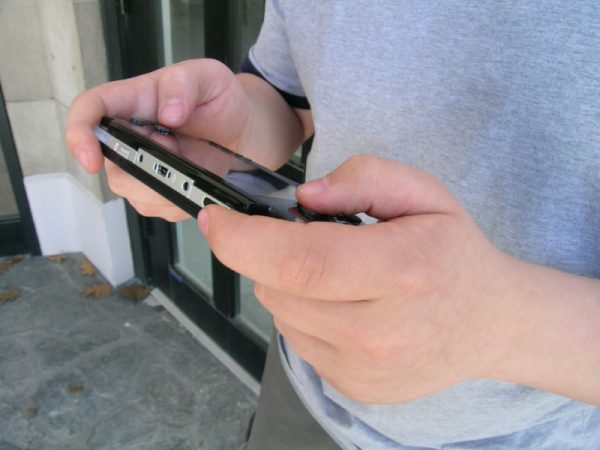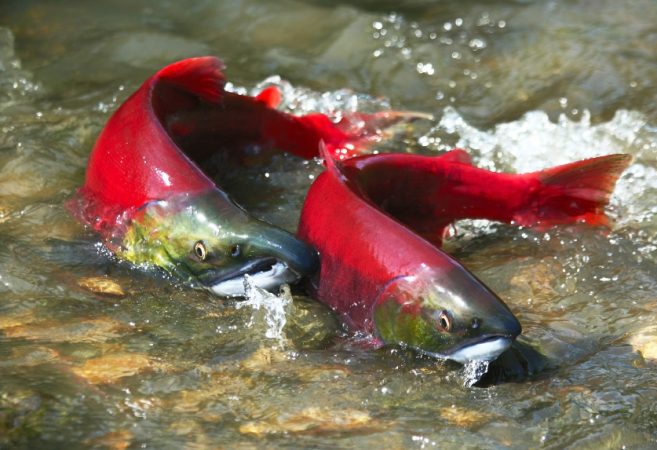Science stars are on display at the White House
Student scientists honored in this year's Science Fair at the most famous address in Washington, D.C.

A snapshot from a big day for young scientists. Anne Merrill, Zarin Rahman, Henry Lin and Brenna Wallin (left to right) shown at the 2014 White House Science Fair.
Caitlin Sullivan/SSP
As a kid, Anne Merrill played with earthworms. She toted them in her pockets and studied how they wriggled in the dirt. Her natural curiosity never left. Years later — this year, in fact — it carried her all the way to the White House. Anne is now 17 and a recent graduate of Greenwich High School in Greenwich, Conn.
On May 27, she showed her latest wormy experiments as part of the fourth annual White House Science Fair. She joined 99 other students from 30 states. They trekked to the capital to attend the fair, meet one another and share their research with the nation’s leaders, including President Barack Obama.
The White House Science Fair showcases experiments from young scientists with big ideas. Most were teens. But not all. This year’s invitees included five 8-year-olds belonging to Girl Scout Troop 2612 in Tulsa, Okla.

“We have to celebrate outstanding work by young people in science, at least as much as we do Super Bowl winners,” the president said. “I’m a big sports fan, but what’s happening here is more important.”
The audience included government officials and science celebrities like television’s Bill Nye “the Science Guy” and Kari Byron, host of the TV show “Mythbusters.”
Like other young environmental scientists, Anne displayed her project on the White House lawn. She was one of eight invited students who had participated in science competitions run by Society for Science & the Public (SSP), which also publishes Science News for Students.
Anne didn’t get to meet the president — this time. “I only saw his feet,” she laughed. But she wasn’t too disappointed. The teen shook his hand in March during a previous visit. At that time, she visited the White House as a finalist in the 2014 Intel Science Talent Search, an SSP event.
Biology on view
Anne’s experiments focused on biochar. It’s a charcoal made from plant matter. The teen showed that this burned stuff can protect plants from harmful fungi and bacteria. In her experiments, she laid the biochar on top of the dirt around tomato plants. Then she added worms, of course. They tunneled through the mixture. The squirmy critters mixed the biochar into the soil.

“Putting your phone down and getting those extra hours of sleep will not only make you feel better but will also improve your performance academically and socially,” she said.
Like Anne, Zarin met the president in March when she visited the White House as a finalist in the Intel Science Talent Search. (She won seventh place and took home $25,000. A year earlier, she took home a first-place award in the behavioral and social sciences division of the 2013 Intel International Science and Engineering Fair, also an SSP competition.) She got to hear President Obama speak and was impressed by how “interested and passionate he was about promoting STEM education.” STEM stands for science, technology, engineering and math.
The highlight of Zarin’s most recent visit was a panel discussion about the importance of STEM education for girls. She joined participants, government officials and scientists to explore ideas for improving that education.
The teen said she enjoyed “brainstorming ways in which STEM education can be presented to and encouraged in young girls around the country.”
Physics also made a strong showing
Last year, Brenna Wallin, now 14, was one of 30 national finalists in a middle-school research event — the 2013 Broadcom MASTERS science competition (also run by SSP). A student at Lexington Traditional Magnet School in Kentucky, she came back to Washington for the White House fair this year.
Part of the panel on girls and STEM education discussion focused on the importance of mentors — often experienced scientists who can offer advice to young people. Brenna said she’d been inspired to work on science projects by in-house mentors: her sisters.

Brenna’s research focused on the 2011 nuclear disaster in Japan. A tsunami struck the coast of Japan and destroyed a nuclear power plant in the city of Fukushima. That event released radioactive material into the ocean and air. Some of the radioactive debris eventually settled in waters off of Alaska, where wild salmon live. The teen suspected that the fish might have picked up some of the radioactive materials. To find out, she compared radiation levels in wild Pacific salmon to those in farm-raised Atlantic salmon. Sure enough, the wild Pacific salmon did emit higher levels of radiation.
Now she’s on to something quite different. An amateur magician, Brenna became curious after reading a story last summer in Science News (our sister publication) on acoustic levitation. It reported Swiss scientists suspending droplets in the air through use of ultrasound waves. “I was very interested in the physics,” Brenna recalls. “How in the world could sound waves levitate objects and how heavy an object could be levitated?” So the teen has begun probing those questions. And, she now reports, “I was able to levitate objects with sound waves in my basement. My dad joked, ‘Use the force Brenna, you’re an acoustic Jedi.’”
SSP invited all three of these young researchers to the White House event, as well as Henry Lin from Shreveport, La. Henry’s research was out of this world — literally. He used mathematics and computer programs to create simulations of clusters of galaxies. (These clusters are big groups of galaxies.) His work won the teen a $50,000 award at the 2013 Intel ISEF.
Henry’s work could help astronomers better understand the most mysterious stuff in the universe: dark matter and dark energy. In a TED youth talk he gave last year, Henry called clusters “the universe’s most massive laboratories.”
These four teen researchers were not the only alumni of SSP science competitions to attend the White House fair. Others included Eric Chen, 18, of San Diego, Calif., Laura Herman, 18, of Fort Lauderdale, Fla., Connor Klemenhagen, 18, of Dayton, Minn., Diserae Sanders, 17, of Phoenix, Ariz., and Elana Simon, 18, of New York City.
This year’s White House fair let young minds shine. But President Obama also used the event as a platform to announce some new government programs he hopes to kick off. These include programs that will train teachers and provide more science education to kids.
For the students who attended, studying science has paid off in a big way. But they all got help along the way — including good advice. Anne Merrill had some advice of her own to pass on to young scientists getting ready to start their own research.
“Find something you love and pursue it,” she said. “It doesn’t matter how ridiculous it is.”
Cancer survivor Elana Simon of New York City was a semifinalist in the 2014 Intel Science Talent Search. Eric Chen of San Diego took first place in that same competition. See President Barack Obama interview them and other students who presented their research on May 27, 2014, at the 4th White House Science Fair. Credit: The White House
Power Words
bacterium (plural bacteria) A single-celled organism forming one of the three domains of life. These dwell nearly everywhere on Earth, from the bottom of the sea to inside animals.
biochar A type of charcoal often used in agriculture to improve soil for plant growth. It can help plants take up nutrients, improve soil drainage, and increase plant yields, tests show.
dark energy A theoretical force that counteracts gravity and causes the universe to expand at an accelerating rate.
dark matter Physical objects or particles that emit no detectable radiation of their own. They are believed to exist because of unexplained gravitational forces that they appear to exert on other, visible astronomical objects.
environmental science The study of ecosystems to help identify environmental problems and possible solutions. Environmental science can bring together many fields including physics, chemistry, biology and oceanography to understand how ecosystems function and how humans can coexist with them in harmony.
fungus (plural: fungi) Any of a group of unicellular or multicellular, spore-producing organisms that feed on organic matter, both living and decaying. Molds, yeast and mushrooms are all types of fungi.
galaxy A massive group of stars bound together by gravity. Galaxies, which each typically include between 10 million and 100 trillion stars, also include clouds of gas, dust and the remnants of exploded stars.
galaxy cluster A group of galaxies held together by gravity. Galaxy clusters are the largest known objects in the universe.
levitation The act of suspending or causing to float in air a person or object — seemingly in violation of gravity.
mentor An individual who lends his or her experience to advise someone starting out in a field. In science, teachers or researchers often mentor students, helping them refine their research questions. Mentors can also offer feedback on how young investigators prepare to conduct research.
nuclear power Energy derived from processes that produce heat by splitting apart the nuclei of atoms (fission) or forcing atomic nuclei to merge (fusion). A nuclear power plant uses that heat to drive turbines that create electricity.
radioactive An adjective that describes unstable elements, such as certain forms of uranium and plutonium. Such elements are said to be unstable because their nucleus sheds energy that is carried away by photons and/or and often one or more nuclear particles. This emission of energy is by a process known as radioactive decay.
STEM An acronym (abbreviation made using the first letters of a term) for science, technology, engineering and math.
TED talks The name is an acronym for Technology, Entertainment and Design. These talks present information on any of a diverse range of topics, ones that range from science and business to global issues.